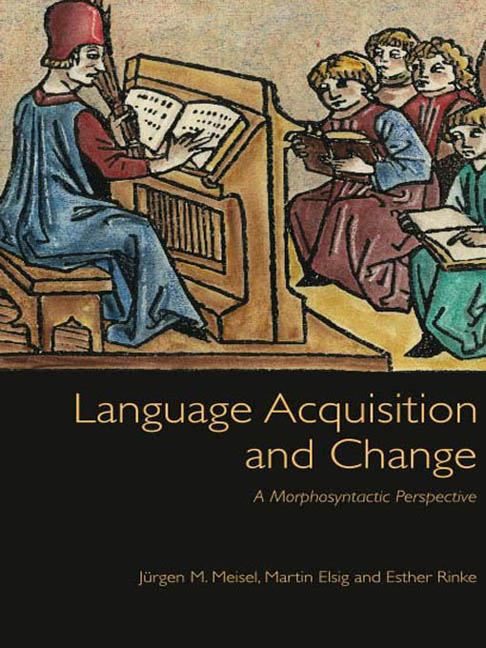Book contents
- Frontmatter
- Contents
- Preface
- Abbreviations
- 1 Variation and change in languages
- 2 Language change across the lifespan
- 3 The child as the locus and agent of grammatical change
- 4 Structural ambiguity as a possible trigger of syntactic change
- 5 Language contact as a possible trigger of change
- 6 Acquisition in multilingual settings: Implications for explanations of change
- 7 Towards an explanatory theory of grammatical change
- 8 References
- Index
6 - Acquisition in multilingual settings: Implications for explanations of change
Published online by Cambridge University Press: 07 December 2017
- Frontmatter
- Contents
- Preface
- Abbreviations
- 1 Variation and change in languages
- 2 Language change across the lifespan
- 3 The child as the locus and agent of grammatical change
- 4 Structural ambiguity as a possible trigger of syntactic change
- 5 Language contact as a possible trigger of change
- 6 Acquisition in multilingual settings: Implications for explanations of change
- 7 Towards an explanatory theory of grammatical change
- 8 References
- Index
Summary
The preliminary conclusion which we can draw from the discussion in the preceding chapters, having scrutinized various attempts at explaining the relationship between language development and diachronic change in the domain of morphosyntax, confirms that language acquisition must be attributed a crucial role in explanations of grammatical change. Yet transmission failure across generations in L1 development turned out to be an unlikely cause for grammatical reanalysis when it comes to accounting for changes of core properties of grammars. Neither variable input frequencies nor apparently conflicting evidence resulting from structural ambiguity, encountered in the data to which the language-learning child is exposed, result in transmission failure in monolingual L1 acquisition. Rather, the LAD was revealed to be a robust enough device to enable children to reconstruct successfully the grammatical competence of their caretakers, even under less than optimal circumstances, thus avoiding structural reanalysis in the domains of grammar under discussion.
Scenarios involving language contact, however, might trigger structural change after all, as surmised in Chapter 3 (Section 3.2) and in Chapter 5. We will therefore have a closer look at language acquisition in multilingual settings in order to determine whether this assumption can be corroborated by what is known about the learning mechanisms and the grammatical knowledge ultimately attained under such circumstances. Note that this review of research on the acquisition of bilingualism in childhood, to the extent that it confirms the claim that language contact situations result in grammatical reanalysis, will not necessarily oblige us to reconsider our rejection of the role of transmission failure as a possible cause of grammatical change. If, that is, the triggering cues are present in the PLD in multilingual settings and are analysed correctly by the children, the ‘failure’ is not one of transmission. The problem rather is that these cues are not part of the grammatical system underlying the language of the previous generation but are part of a different, possibly a non-native linguistic system.
- Type
- Chapter
- Information
- Language Acquisition and ChangeA Morphosyntactic Perspective, pp. 137 - 165Publisher: Edinburgh University PressPrint publication year: 2013



